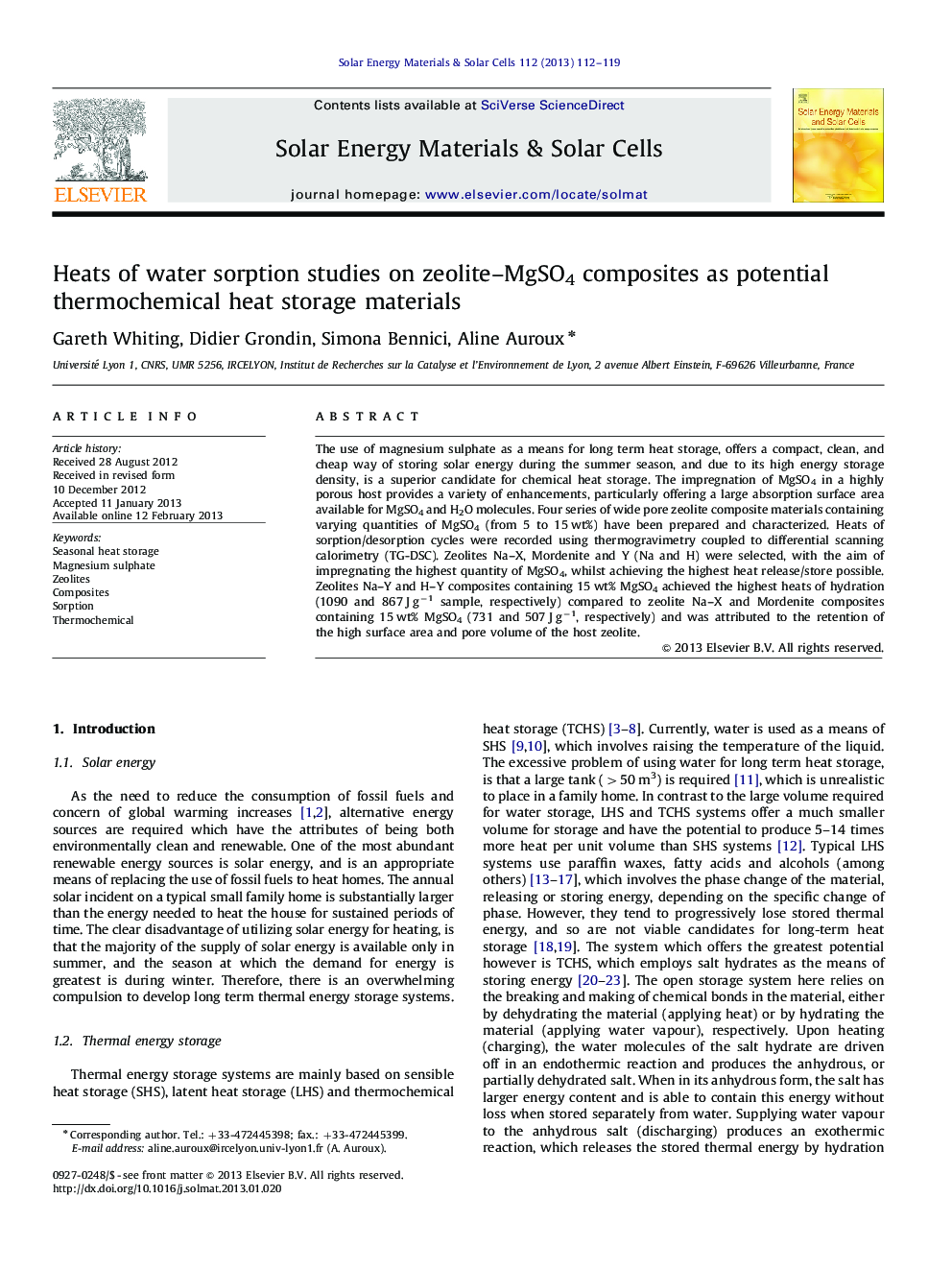| Article ID | Journal | Published Year | Pages | File Type |
|---|---|---|---|---|
| 78529 | Solar Energy Materials and Solar Cells | 2013 | 8 Pages |
The use of magnesium sulphate as a means for long term heat storage, offers a compact, clean, and cheap way of storing solar energy during the summer season, and due to its high energy storage density, is a superior candidate for chemical heat storage. The impregnation of MgSO4 in a highly porous host provides a variety of enhancements, particularly offering a large absorption surface area available for MgSO4 and H2O molecules. Four series of wide pore zeolite composite materials containing varying quantities of MgSO4 (from 5 to 15 wt%) have been prepared and characterized. Heats of sorption/desorption cycles were recorded using thermogravimetry coupled to differential scanning calorimetry (TG-DSC). Zeolites Na–X, Mordenite and Y (Na and H) were selected, with the aim of impregnating the highest quantity of MgSO4, whilst achieving the highest heat release/store possible. Zeolites Na–Y and H–Y composites containing 15 wt% MgSO4 achieved the highest heats of hydration (1090 and 867 J g−1 sample, respectively) compared to zeolite Na–X and Mordenite composites containing 15 wt% MgSO4 (731 and 507 J g−1, respectively) and was attributed to the retention of the high surface area and pore volume of the host zeolite.
► Heat storage capacity of wide pore zeolites and composites with MgSO4 determined. ► Pore volume determination of zeolites/MgSO4 composites. ► Zeolite Y (Na and H) composites achieved high heat of water sorption. ► Maintaining a large pore volume after MgSO4 impregnation is crucial.
